Before the trees leaf out in the spring, tiny wildflowers emerge taking advantage of the extra sunlight that reaches the forest floor. This past April we searched for wildflowers at four Ohio State Nature Preserves. Two were in Champaign County (Cedar Bog and Davey Woods) and two were in Fairfield County (Wahkeena and Shallenberger). Below are some of the flowers that we saw.
Cedar Bog
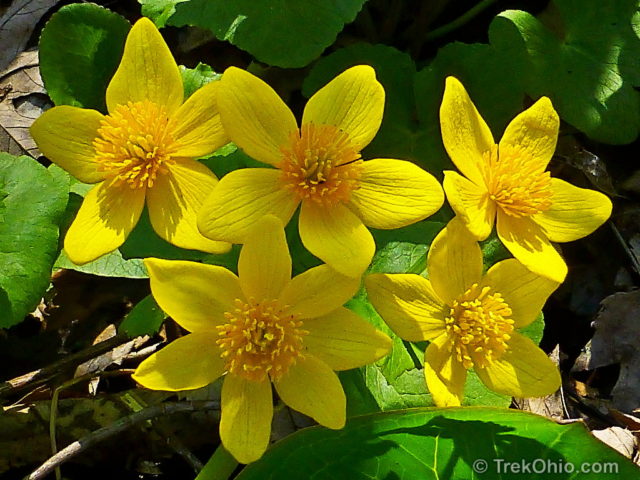
The marsh marigold pictured above are beautiful, yellow flowers, but the picture does not convey how widely distributed the flower is at Cedar Bog. There were areas where it seemed like marsh marigold was everywhere. Besides seeing these flowers in full bloom, April is also a great time to visit this wetland because there still aren’t many mosquitoes out. I wasn’t bothered at all by them during this trip.
During our mid-April visit, the skunk cabbage leaves were emerging en masse, but the flowers were almost gone. Although not the showiest flower ever, it has some amazing properties. The plant begins to flower in February and generates its own heat chemically so that it can melt the snow around the flower allowing it to be pollinated.
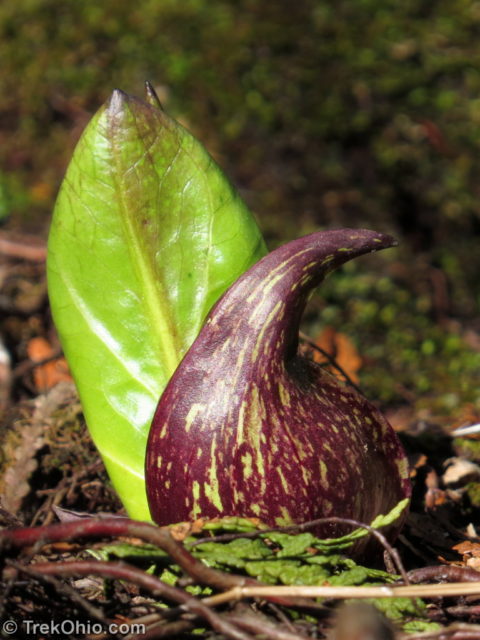
We also saw a lot of rue anemone at Cedar Bog. This small flower is usually white, but it sometimes it has a pink or purple tint.
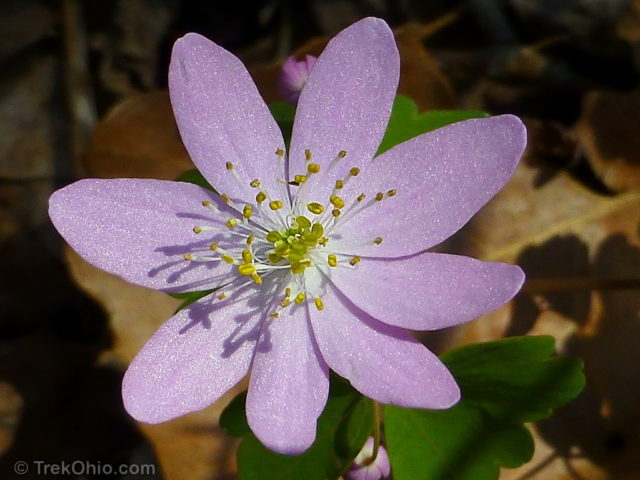
Davey Woods
While we were here mid-April there were many different kinds of wildflowers. The one below, “Harbinger of Spring”, is named that because it is one of the earliest spring flowers; it’s a very tiny flower.
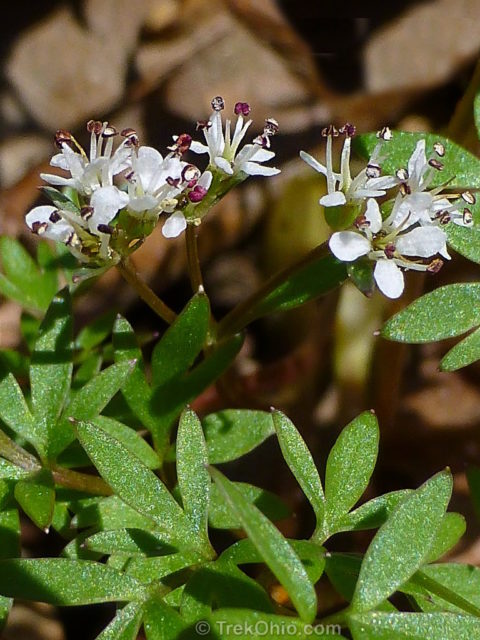
Trout lily is abundant at Davey Woods.
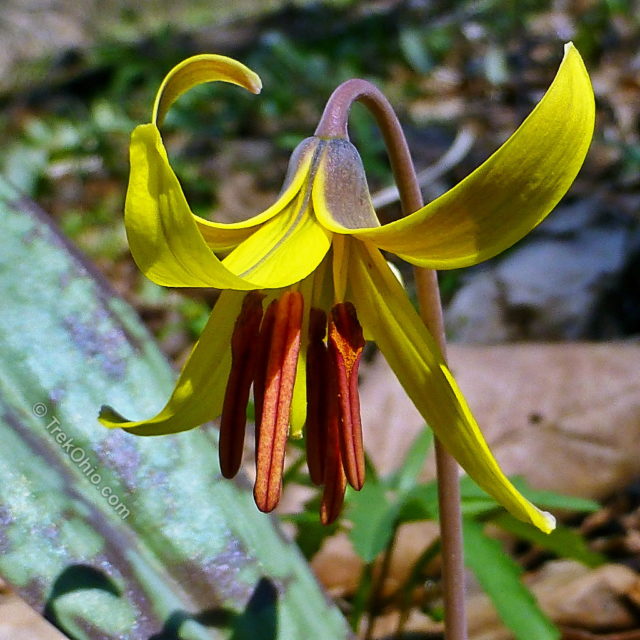
Below I have a photo of the blossom of twinleaf, followed by a photo of the plant’s leaves, so you can see how it got its name
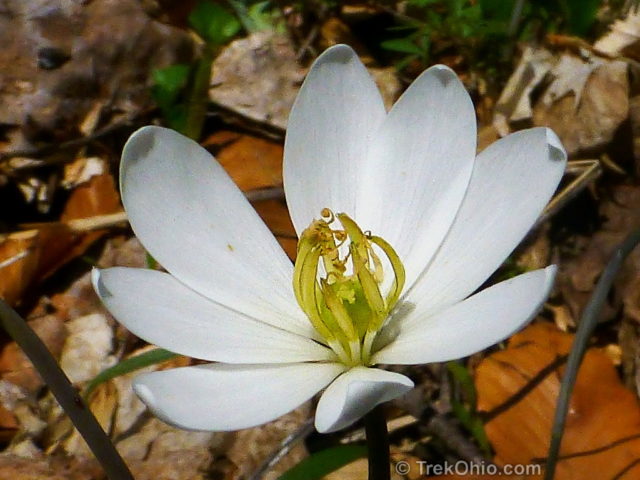
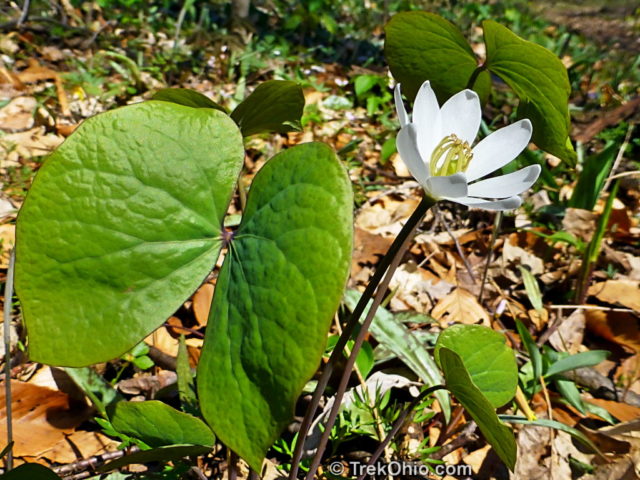
Although we were at Davey Woods a bit too early to see the trillium in bloom, an exception was the toadshade trillium pictured below. Toadshade’s blossom looks like a bud that never opens. I have never smelled the flower, but supposedly it is foul-smelling… all the better to attract it’s preferred pollinators: flies and beetles.
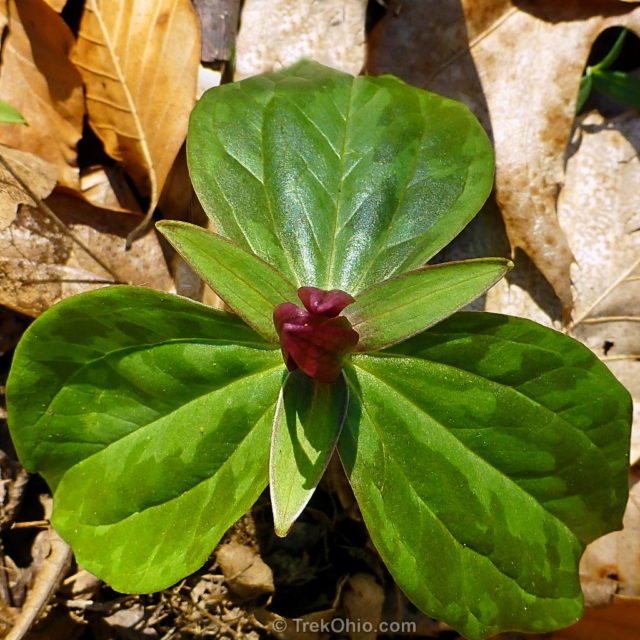
Another plant with a dark flower is Blue Cohosh, pictured below. I believe it is said to be “blue” because of its blue berries.
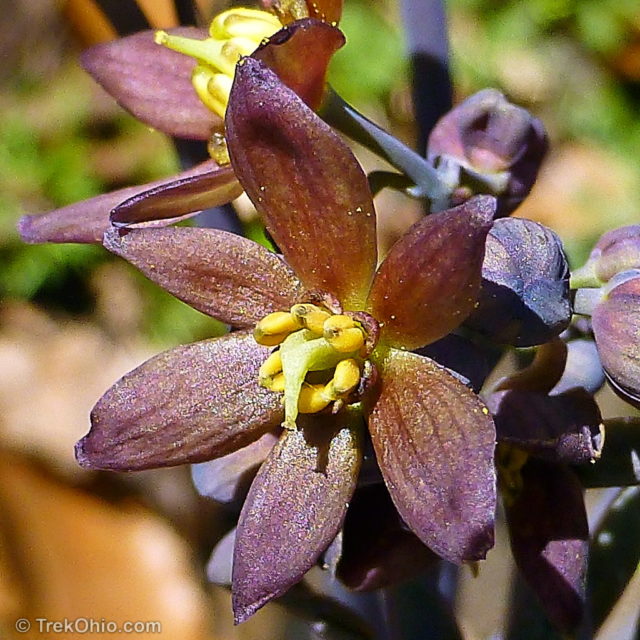
The leaves of the following two plants are pleasant, feathery-looking things, and it can be hard to tell the plants apart unless they are in bloom. The first one is called “Dutchman’s breeches” because the flowers look like upside-down pants. The second is called, “Squirrel corn.” With a name like that you’d think that squirrels like to eat it, but I have been unable to uncover any evidence that that’s true. The foliage is apparently toxic which keeps deer and other mammals from browsing on it. The “corn” part of squirrel corn comes from yellow protuberances that grow underground off the roots. These apparently look like corn. In Plant of the Week: Squirrel Corn (Dicentra canadensis), Dr. Thomas Barnes describes the role of squirrel corn in Native American lore. The Onondaga believed it served as food to immaterial spirits and so called it “ghost corn.” The Mennominee made use of it as a love charm. Men of this tribe chew the roots (hopefully not toxic?) and this would give off a pleasant fragrance that he would breathe into the face of his beloved so that she would succumb to his charms and follow him forever.
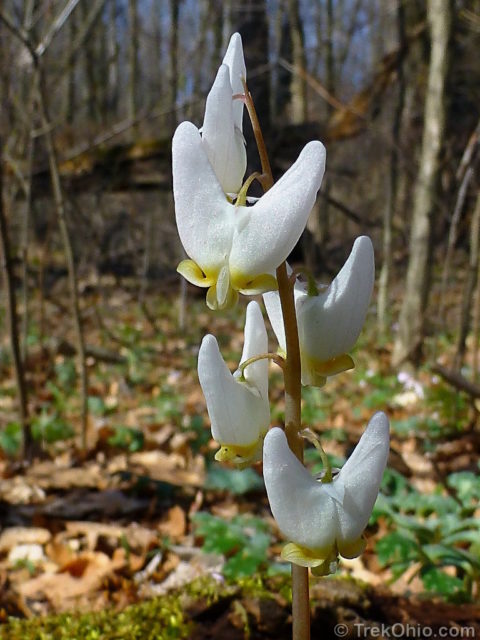
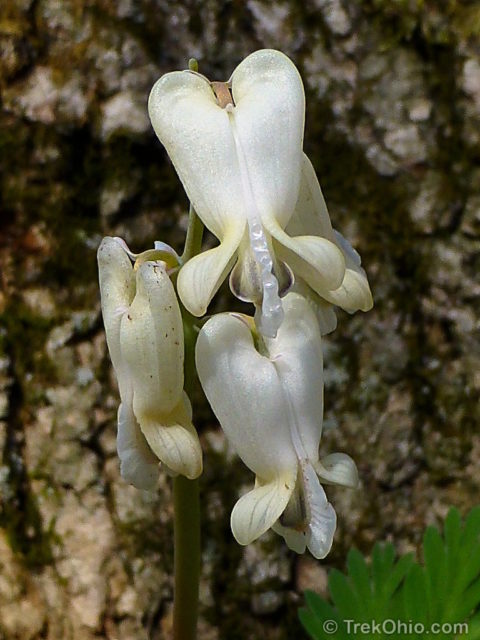
Spring beauty is a tiny, woodland flower that ranges from plain white to white with pinkish veins.
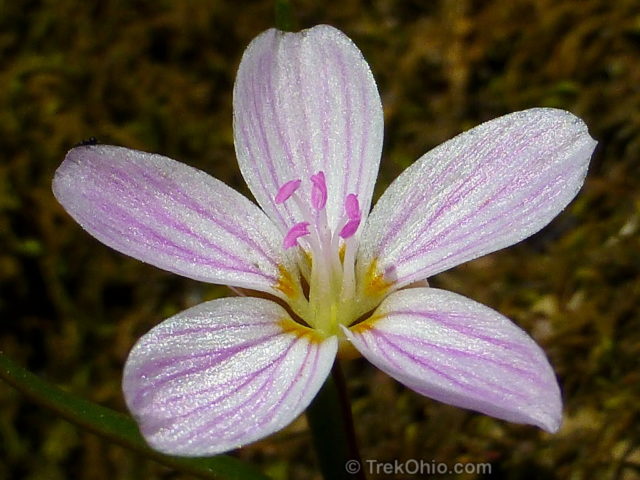
I believe that the following is rue anemone. If you compare this photo to the one above taken at Cedar Bog, you’ll note that the center of the flower looks really different. I believe that’s because the one below has been fertilized already, and it is in process of transforming from flower to seed-bearing fruit.
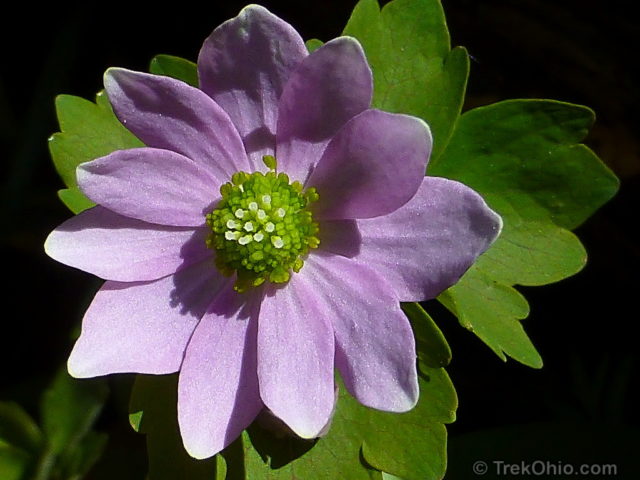
The next two flowers are bloodroot. The first one is a typical representative of the species. The second one (photographed at Wahkeena Nature Preserve) is a mutant.
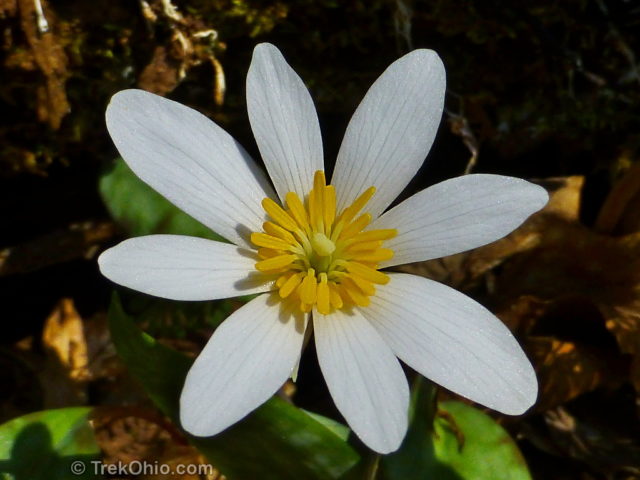
Wahkeena
The bloodroot flower below has many more petals than is normal (it is said to be “multiplex”). It is also incapable of developing the plant’s seed-bearing pods because it has no reproductive parts. There is a blog associated with the Wahkeena Nature Preserve, and one of the naturalists there, Robyn, has a post on bloodpost in which she discusses this flower species and this particular mutant: Focus on…Bloodroot.
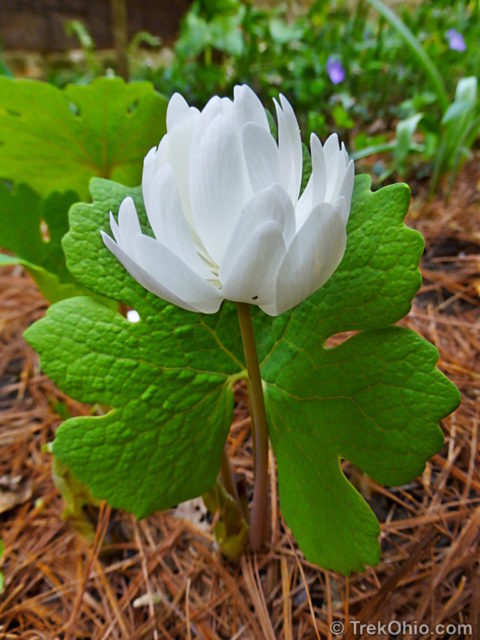
The Bellwort below was growing in a garden bed next to the nature center building. Seeing wildflowers doesn’t get much easier than that!
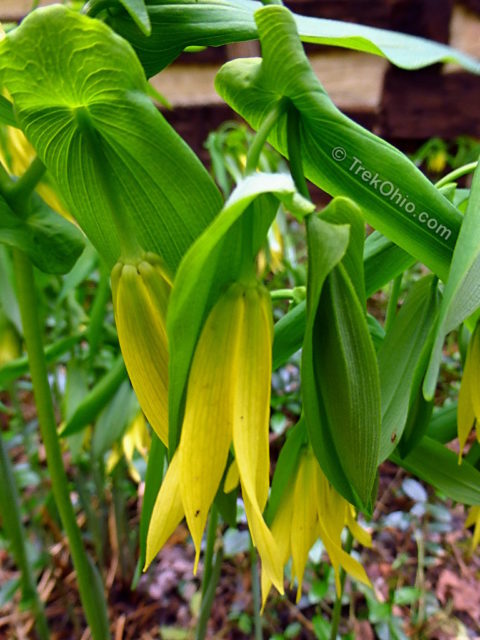
The tiny flower below is not native to North America, and perhaps is more accurately thought of as a weed than a wildflower. Still it was a pretty, little thing.
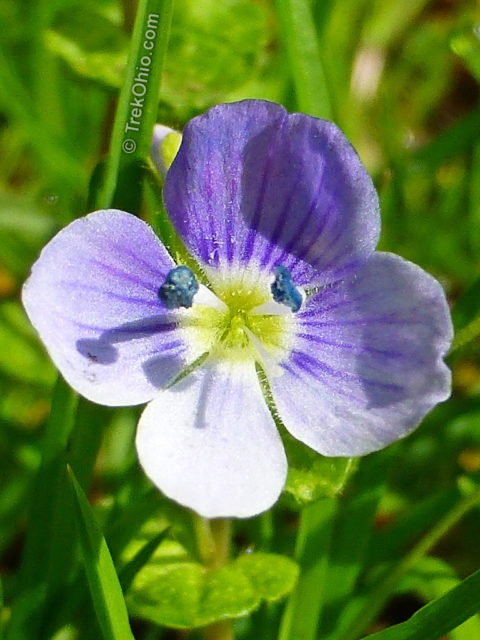
Many different kinds of wild violets were in bloom while we were there. Here are a few.
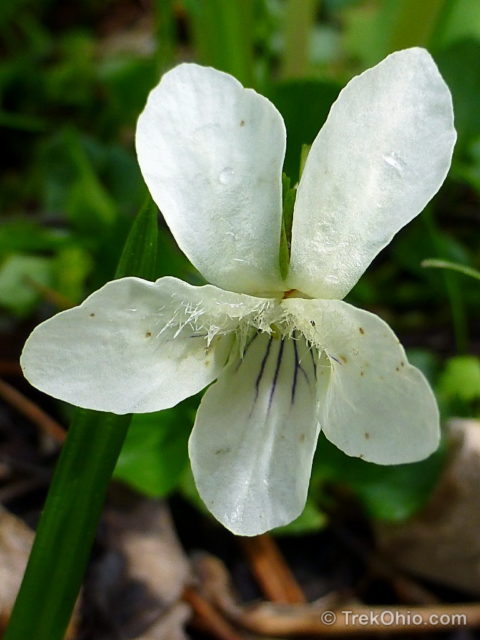
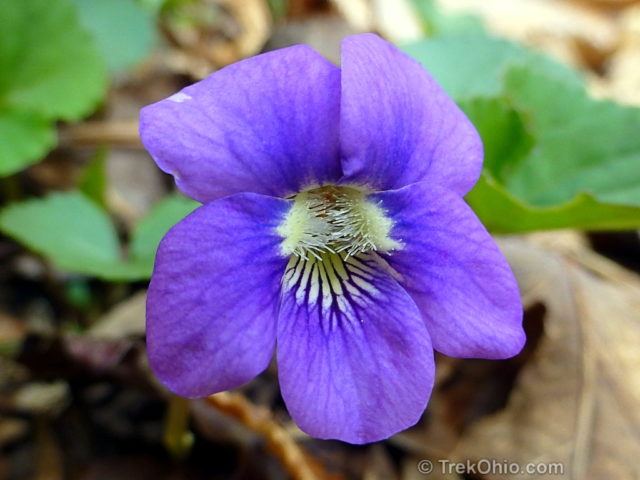
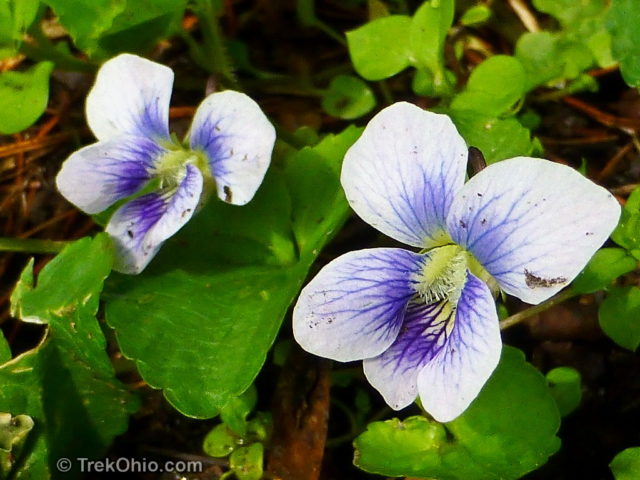
Shallenberger
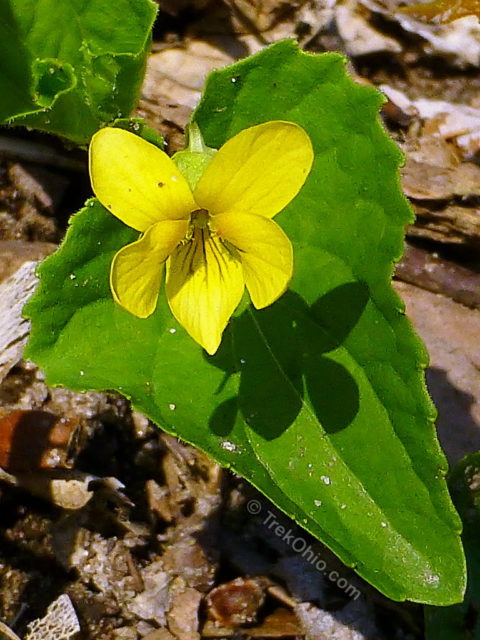
We were too early to seem most of the trillium in bloom at Davey Woods, but there were large areas of blooming trillium at Shallenberger toward the end of the month.
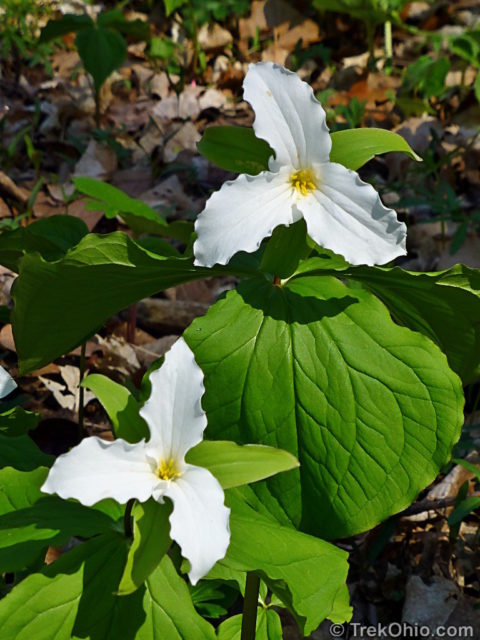
The flower below is the blossom of wild ginger. Although the Native Americans did use the root for a seasoning in cooking, an article about the plant at Wikipedia warns against doing this because the root contains carcinogens. According to the U.S. Forest Service, the plant’s preferred pollinators are attracted to rotting carcasses. Flies emerging from the ground at the end of the winter are attracted to it’s flesh-colored flower petals, and they enter the flower to eat its pollen.
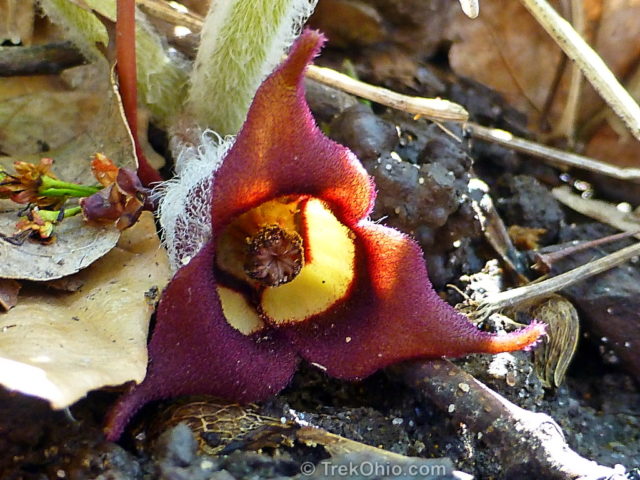
The Nature Preserves
More on Wildflowers
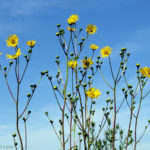
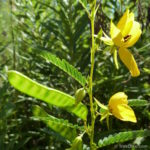
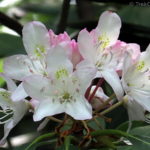
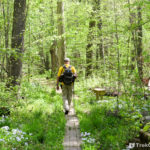
I like you pics and I was hoping to post a pic of a wildflower that I ran across in some woods where I live. I have looked at all kinds of wildflower sites but can’t identify it..Not sure how to post a pic though..well maybe you can email me back and I can send one with email, I have never seen one before.
Thank You,
Michele
I’ve sent you an email, so you can respond to me and attach your photo of the flower.
Hi, I have a couple of wildflowers that I’d like to identify but can’t seem to find any breed of them online. One was growing wild in my yard, the other 2 I found growing near my great great grandparents plot in a neighborhood cemetery. Is there anyone who could help me identify them? 🙂 Thank you!
This is a delightful website! A friend of a friend posted a link to it on Facebook. Gorgeous photos and wonderful information! Thank you!
Patty, thank you for your kind words. 🙂
What a lovely set of so beautiful photos of flowers. Many of them are unknown to me.
That trout lily is gorgeous! I love the shots of the violets, they’re so pretty. Fantastic photos as ever, you have such great native flora 🙂 x
I am always in awe of your photographs.
Thank you, Bob. That’s really kind of you to say.
Beautiful shots!
Thanks, Karen. 🙂